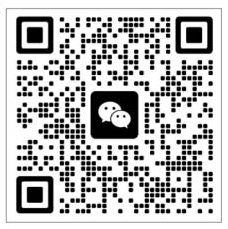E-mail:Machine@chinaventech.com Expert for pre insulated duct CNC cutting machine.
Technological Progress And Innovation Of The PI Insulated Duct Industry
Polyisocyanurate (PI) insulated ducts are a versatile and essential component in HVAC (Heating, Ventilation, and Air Conditioning) systems. These ducts are designed to maintain the optimal temperature and humidity levels in buildings by efficiently transferring air while minimizing heat loss or gain. PI insulated ducts are made from a thick, durable, and highly insulating material that offers superior thermal performance. They come in various shapes and sizes, making them suitable for a wide range of applications.
The PI insulated duct industry has evolved from a basic manufacturing process to a sophisticated and innovative sector. Currently, these ducts are indispensable in commercial and residential buildings, playing a critical role in energy conservation and comfort. With the increasing focus on sustainable building practices and the demand for energy-efficient systems, the PI insulated duct industry has seen significant advancements in recent years.
The Role of Technology in Shaping the PI Insulated Duct Industry
Technological advancements have revolutionized the manufacturing and installation processes of PI insulated ducts. One of the most significant changes is the introduction of automated assembly lines, which have greatly increased production efficiency and reduced labor costs. These automated systems can produce high-quality ducts faster and with greater consistency than manual processes.
Digital design tools have also transformed the way ducts are created. Design software allows engineers and manufacturers to create precise and detailed designs, ensuring that the final product meets the exact specifications of the project. Moreover, digital tools help in identifying potential issues early in the design phase, reducing the likelihood of errors and discrepancies during construction.
Quality control systems have become more sophisticated, incorporating advanced testing and monitoring techniques. These systems ensure that each duct is of the highest quality, meeting stringent performance standards. For instance, thermal conductivity tests help in verifying the insulation properties of the ducts, ensuring they perform optimally under various temperature conditions.
Innovative Materials and Composite Insulations
The PI insulated duct industry is constantly exploring new materials and composite insulations to enhance the performance and sustainability of ducts. One of the latest developments is the use of nanomaterials, which offer superior thermal insulation properties and increased durability. These materials can form a more robust barrier against heat transfer, leading to better energy efficiency and reduced maintenance costs.
Other innovative materials include recycled plastics and bio-based composites, which are more environmentally friendly. Recycled materials help in reducing waste and conserving natural resources, while bio-based composites offer a sustainable alternative to traditional petroleum-based insulations. These materials not only enhance the performance of ducts but also align with the growing trend towards environmental responsibility.
Traditional PI insulated ducts are made from a combination of polyisocyanurate foam and a protective outer layer. However, the advent of new composite materials has introduced more advanced designs. For example, some manufacturers are using hybrid materials that combine the insulative properties of PI foam with the strength and durability of other materials like steel or aluminum. This integration results in ducts that are not only more efficient but also stronger and more resistant to damage.
Smart Duct Systems and IoT Integration
The integration of Internet of Things (IoT) technology in PI insulated ducts is another significant innovation. Smart duct systems can be equipped with sensors that monitor temperature, humidity, and airflow in real-time. This data can be transmitted to a central system, allowing for remote monitoring and management of HVAC systems.
For instance, temperature sensors can detect any deviations from the desired temperature range and adjust the HVAC settings accordingly. Predictive maintenance systems can alert maintenance teams about potential issues before they become major problems, reducing downtime and improving overall performance. Real-time monitoring also enables energy usage optimization, leading to significant cost savings and enhanced efficiency.
Several companies have successfully implemented smart duct systems in their buildings. For example, a large office complex in a major city integrated IoT sensors into its PI insulated ducts. The sensors provided real-time data on temperature and humidity, allowing the facility managers to make informed decisions about HVAC adjustments. As a result, the complex saw a 20% reduction in energy consumption and a 15% decrease in maintenance costs.
Sustainability and Green Initiatives
The PI insulated duct industry is increasingly focusing on sustainability and green initiatives to meet the growing demand for environmentally friendly products. One of the key areas of focus is the use of recycled materials. Many manufacturers now incorporate recycled plastics into their ducts, reducing waste and conserving natural resources. Recycled polyisocyanurate foam, for example, offers similar insulating properties to new foam but with a lower environmental impact.
Energy-efficient production methods are also being adopted to reduce the carbon footprint of the industry. For instance, some companies have implemented closed-loop systems where waste materials are recycled and reused in the manufacturing process. Additionally, the use of bio-based coatings and adhesives is gaining traction. These coatings not only enhance the insulating properties of the ducts but also reduce the environmental impact of the production process.
Several companies have taken green initiatives a step further by obtaining certifications such as LEED (Leadership in Energy and Environmental Design) and ENERGY STAR. These certifications not only validate the sustainability efforts of the companies but also enhance their reputation and marketability. By prioritizing sustainability, the PI insulated duct industry is aligning itself with the broader trend towards eco-friendly building practices.
Challenges and Future Predictions
Despite the many advancements, the PI insulated duct industry still faces several challenges. One of the most significant is the balance between cost-effectiveness and performance. While innovative materials and smart systems can improve efficiency and reduce maintenance costs, they often come at a higher initial investment. Manufacturers must find ways to balance these costs with the long-term benefits of their products.
Regulatory compliance is another critical challenge. Governments and regulatory bodies are increasingly enforcing stricter standards for energy efficiency and sustainability. Companies must ensure that their products meet these standards to remain competitive and compliant. Additionally, market competition is intensifying, with new players entering the space and established companies innovating to stay ahead.
Looking to the future, several trends are expected to shape the PI insulated duct industry. Advancements in nanotechnology are likely to lead to even more efficient and durable materials. Bio-based materials will continue to gain traction as more companies seek sustainable alternatives. The integration of emerging technologies like AI and machine learning will also play a role in optimizing duct performance and maintenance.
The Future of PI Insulated Ducts
In conclusion, technological progress and innovation have significantly transformed the PI insulated duct industry. From automated manufacturing processes to smart duct systems and green initiatives, the industry is continuously evolving to meet the demands of a more sustainable and energy-efficient world. As challenges persist, the industry’s focus on innovation and sustainability will continue to drive growth and transformation. The future of PI insulated ducts is bright, with the potential for further advancements in materials, technology, and green practices.
Quick Links
Products
Contact Us


